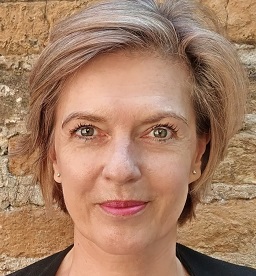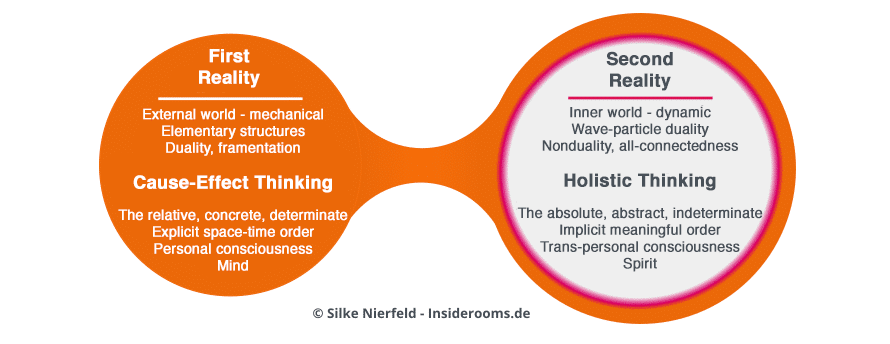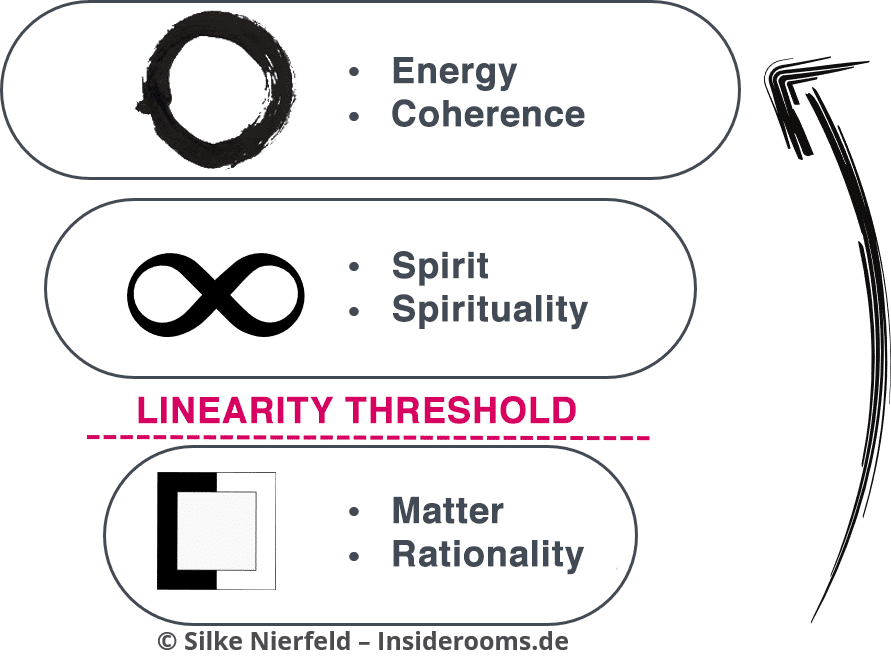Agile Mindset? I know of something much better!
For several years I have been writing about how agility is a good start – but not yet the solution – to dealing with complexity. My argument is that changing structures and processes is not enough because it only relates to what can be rationally grasped, what is explicitly conscious and repeatable.
In the meantime, I increasingly read that agility needs an agile mindset in order to function, that it is about BEING and not just the methods. Dear people, that is exactly what I said! However, BEING is much more than a mindset and once the difference is understood, a different way of dealing with complexity opens up. This article will unravel the difference.
What is an agile mindset?
A mindset is the inner attitude that guides thinking, feeling and acting. If the thinking changes, the behaviour changes. The mindset is not a rigid corset, but a changeable set of beliefs that develops through learning experiences. The contents of the mindset are partly conscious and partly unconscious.
The agile or growth mindset, which has been researched by psychology professor Carol Dweck, leads to a view that also sees opportunities in failures and sees mistakes as an opportunity to develop further. Nassim Nicholas Taleb has coined the term antifragility, when one faces the unknown and the new in an affirmative way.
Should one change mindsets?
Even if you can change mindsets in principle, you should only do so in cases where there is a strong intrinsic motivation. All unasked-for interventions in people’s reality construction carry the risk of causing hardening instead of change.
Nevertheless, let us assume that a novel mindset vaccine would have the effect of boosting people’s mindsets to the agile level that corresponds to the integral level of consciousness¹ of the Spiral Dynamics model. Companies would then lose many employees because they are not prepared to offer people who are willing to change the appropriate space to develop.
People who manage change effortlessly do not wait for circumstances to deteriorate in order to look for new tasks. They want lifelong learning and development rather than permanence. Their focus is not on increasing income and status; permanent positions have a deterrent rather than a reassuring effect on them. Their career paths are transitory because they want to develop as many facets as possible and do different things. For them, change is the constant in life.
Companies are therefore well advised to work together with their employees to develop their ability to change, while allowing everyone to move at their own pace. Nature’s recipe for success is diversity, mixed forests instead of plantations. Concepts that require uniform structures or certain behaviour are too rigid to be sustainable.
Change is necessary
There is no disputing the fact that organisations need to change, for two reasons. On the one hand, the logics of traditional business management, which were based on sensible planning and consistent implementation, no longer work in a volatile, complex VUCA world.
On the other hand, employees, customers and society are formulating demands for sustainability, participation, meaning and a focus on the common good, which are to be linked to economic success. It is a paradigm shift from the mechanical to the living paradigm of conscious economic activity. This requires a new quality in the development and management of organisations.
The paradox of agility
The concept of agility wants to provide solutions for the VUCA world. This means assistance in dealing with the indeterminate, the changeable, the ambiguous, the complex. How, then, should specific structures, processes and mindsets be the answer?
All methods, models and frameworks are products of the mind that grasps the concrete, definite, limited of reality and examines their causal relationship. They are solutions for the efficient use of resources. However, the main problem is not the inefficient use of resources, but the fact that
- two-thirds of all employees have no commitment to their employer (Gallup studies) and do duty by the book,
- the pace of innovation in companies is far too slow,
- people suffer from stress and lack of meaning,
Cultural change and the pace of innovation are the key factors for the future viability of companies. Bringing about fundamental improvements in these areas is not achieved by fixing things, but by integrating the living and the meaningful. Nature is the model for dealing with complexity, because it has multiple dimensions and only one can be grasped with cause-and-effect thinking.
The nature of complexity
Dynamics is the second reality, the SPIRITUAL dimension, implicit in everything material because the world has a dual nature. (Writing in capitals refers to the dimension, normal writing to the personal mind). The nondual, non-causal, indivisible dimension of SPIRIT is – completely unnoticed by the mind – in, between and behind things.
Matter is inseparably connected with the inner, living dimension of the SPIRIT, as mysticism has always known and quantum physics already proved 100 years ago. However, this realisation has still not entered the general understanding of science, so that science mainly refers to repeatable phenomena and thus ignores the liveliness of complexity.
As a result, a mechanical, rational view of the world has emerged that excludes essential areas of reality. It is therefore not surprising that change processes that are pursued with rational strategies regularly fail because of the liveliness of reality.
When reality is dynamic and solutions are mechanical, failure is inevitable.
The dynamic side of reality is by no means random or chaotic. We speak of chance, luck, miracles, surprises, bad luck and much more when things are erratic and non-linear. In fact, the second reality is subject to a sensuous-holistic order that goes beyond the linearity of the space-time order. Understanding this second order, (which is in fact the priority one and includes the first) succeeds at the holistic level of consciousness that follows the integral one and is called second-tier thinking.²
Because human beings are dual beings of matter and spirit, they are connected to the dimension of SPIRIT at every stage of development, it is only the degree of awareness of this fact that differs. In the spirit of the human being lie the ability of vision, creativity, intuition as well as the longing for something that transcends one’s own person and the profane. The need for transcendence, for expansion, knowledge and bliss is the essence of the soul, which is not only an inwardness of the human being, but an expression of his whole BEING. One could also say that the soul unites the unconscious, conscious and superconscious.
Now we have found the difference to the mindset, it is the integration of the dimension of the SPIRITUAL, the absolute, indeterminate, infinite. The soul combines concrete thinking (mind) and dynamic thinking (consciousness, spirit). It expresses itself in everything people do, in their cars, jumpers and the way they work. Conscious soul development is a process that usually becomes meaningful after personality development and being in contact with the soul is what gives life meaning.
“The future belongs to those who recognise possibility before it becomes obvious.” – Oscar Wilde
Holistic Change Management
Integrating the dimension of the SPIRITUAL is not only the path to the meaning of life, but also to the sustainability of companies. In the orientation towards holism, the potentials for
- the identification with the vision of the company, which creates employee loyalty.
- the increase of creativity and innovation.
- the connection between economy, meaning and the joy of performance.
The only question is how to integrate something that is beyond the grasp of the mind. I have found a pragmatic solution to this problem:
I work with energy because it is the connection of matter and SPIRIT, but does not require an explicit understanding of the spiritual-dynamic dimension.
When things flow and do not have to be fought for, one is in harmony with the holistic order of reality. People who integrate the energetic level improve their reality of life by leaps and bounds.
Energy controls all functions of life. Everything that exists in the world is subject to the forces of nature, including organisations. Do you occasionally wonder why some processes succeed effortlessly and others do not, despite the greatest effort? Have you also observed that success cannot simply be repeated, even though you do the same things?
Nature organises itself. Acting against its principles does not work in the long run. You can lose a few kilos with diets and be prepared for the body’s counter-reaction, because everything in nature is controlled by competitive forces. Instead of fighting the undesirable, you deprive it of attention and thus energy. Those who understand the unity of opposites can resolve paradoxes and contradictions.
It is therefore a matter of acting in harmony with the forces of nature and achieving better results with less effort. This is achieved through holistic action, the understanding that impact comes from the combination of energy, intention, timing, activity, context and consciousness. Because things are dynamic and changeable, the individual steps towards a goal must also be varied again and again. Immediacy is the key in dealing with complexity and immediate is the thinking of the soul. It recognises the favour of moments, the perfect wave to surf, even if the plan was originally different.
Future viability comes from energy and passion, from adaptability and innovation.
Conclusion
All difficulties in dealing with complexity are based on the fact that rational thinking can only grasp the mechanical part of reality and the dynamic, second nature, which produces constant change, remains hidden. Mechanical strategies are energy-sapping, do not inspire people and achieve little innovation.
Change is the constant in life, but change is linear and erratic, it is concrete and abstract, visible and invisible. In wholeness lies the key to fullness, depth and meaning in life. Agile mindsets respond positively to change, but they do not yet integrate the multidimensionality of reality and remain in rational thinking.
Holistic thinking uses the dynamics of complexity to transform companies into living organisations that unleash innovation and cultural change from their untapped potentials and achieve better results with less effort. It is the thinking of the soul that captures the multiple dimensions of reality and enables a new quality of work that combines economy, meaning and the joy of performance.
Holistic change management does not require specific structures or mindsets. It supports the effectiveness of any kind of organisational structure, from traditional to agile, from matrix to holacracy. Gradual adaptation to the principles of nature transforms performance stress into performance joy – without gruelling change processes. The concept of Holistic Change Management³ is aimed at companies that are looking for new ways to make work meaningful, ethical and successful, that want to make a difference.
Notes (mostly in German):
[1] Integrales Denken – Was bedeutet das?
[2] Second-Tier Thinker – Was ist das?
[3] Holistisches Change Management
If you would like to exchange ideas with Silke Nierfeld about Holistic Change Management, you can easily do so via https://insiderooms.de/.
Silke Nierfeld has published three additional articles in the t2informatik Blog:

Silke Nierfeld
Silke Nierfeld is a transformation expert, future architect, philosopher and executive coach. She has spent her life exploring the things behind the things in order to make people’s lives better, easier and more meaningful. Her concern is a working world that makes the term work-life balance obsolete and transforms performance stress into performance joy.
Her holistic change management concept is amazingly effective. It transforms companies into sustainable organisations that can calmly deal with the challenges of the VUCA world. The integration of unconscious dimensions of being transforms everyday life from the inside, it is a game changer.
Contact Silke Nierfeld if you want to establish innovation and cultural change in your company – without gruelling change processes.





